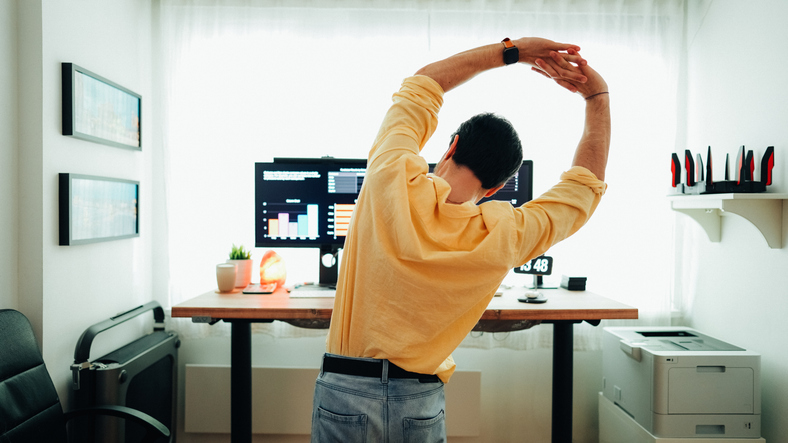Office ergonomics: Your how-to guide for a healthier workday
If you spend long hours at a desk, creating a workspace that prioritizes your comfort and health can significantly impact how you feel throughout the day. You don’t have to accept discomfort as part of the job. You can alleviate common issues like back and neck pain, wrist strain, and shoulder tension with a few essential adjustments while boosting your productivity and well-being.
Let’s start with the foundation of your setup — your chair. A well-designed chair that supports your spine can make a world of difference—adjusting the height so that your feet rest flat on the floor or using a footrest allows your thighs to sit parallel to the ground. You’ll also want to ensure your arms gently rest on the chair’s armrests with relaxed shoulders, keeping your elbows close to your body.
Now, take a look at your desk. You must have enough space under the desk to stretch your legs comfortably. Avoid storing items underneath that might limit your ability to sit correctly. Place sturdy boards under the legs if your desk is too low to raise it to a comfortable height. Conversely, raising your chair and using a footrest will help maintain the proper alignment if the desk is too high.
The placement of your keyboard and mouse also plays a crucial role in maintaining comfort. You can prevent strain and discomfort by positioning the keyboard directly in front of you with your wrists and forearms aligned and keeping your mouse close to avoid overreaching. A quick adjustment of the mouse sensitivity can further reduce effort and keep your wrist in a relaxed, neutral position.
Let’s not forget about your monitor. Ideally, it should be placed directly in front of you, about an arm’s length away, with the top of the screen at or just below eye level. This setup helps avoid neck strain and promotes better posture. If you’re wearing bifocals, consider lowering the monitor slightly to make viewing more comfortable.
You can also improve your workspace by keeping frequently used objects, such as your phone, stapler, or notepads, within easy reach. This minimizes unnecessary stretching and reaching throughout the day, which can lead to discomfort over time.
Finally, no matter how perfectly arranged your workspace is, sitting for long periods isn’t healthy. Make it a point to get up and move around throughout the day. Stretch your hands, fingers, and arms, and shift your position to alleviate strain and promote overall well-being.




